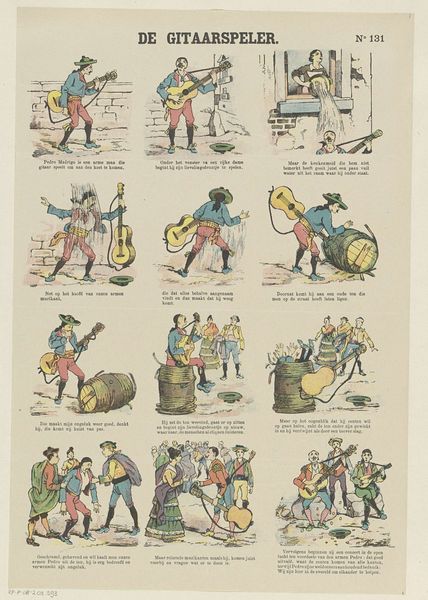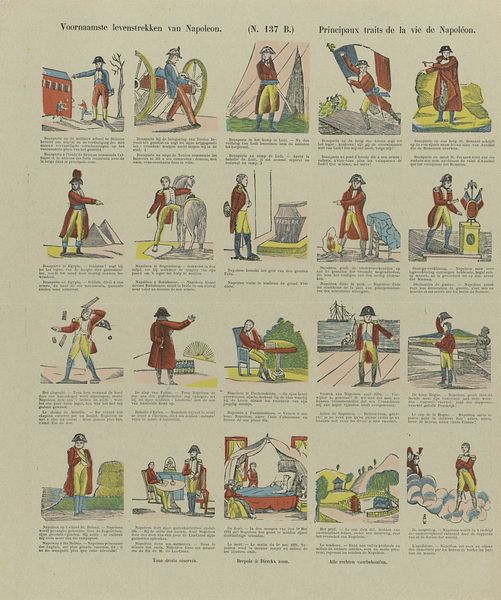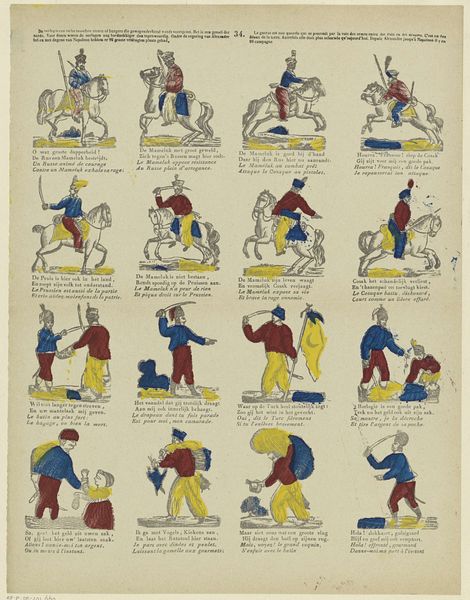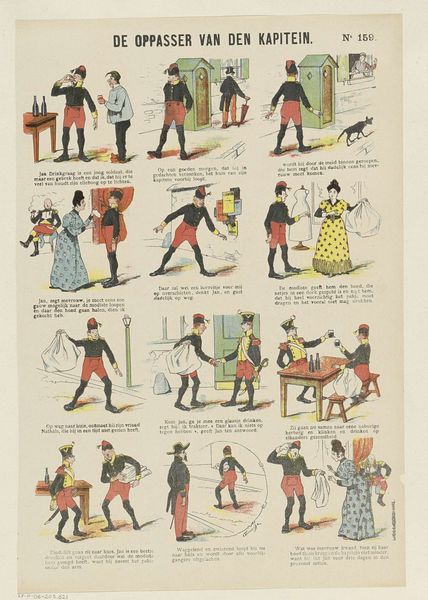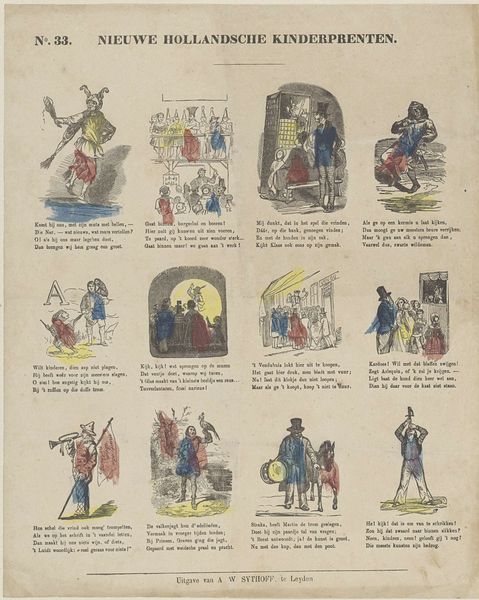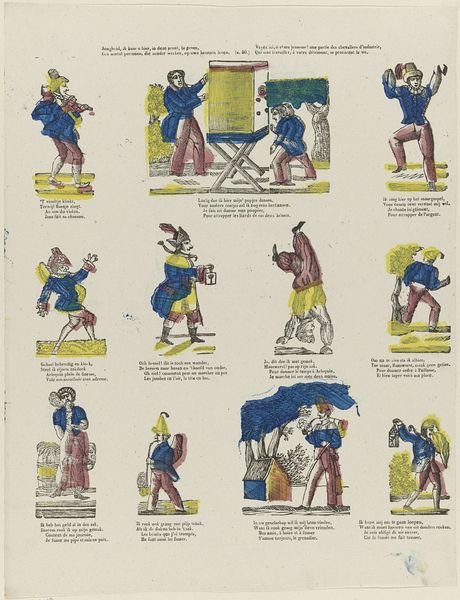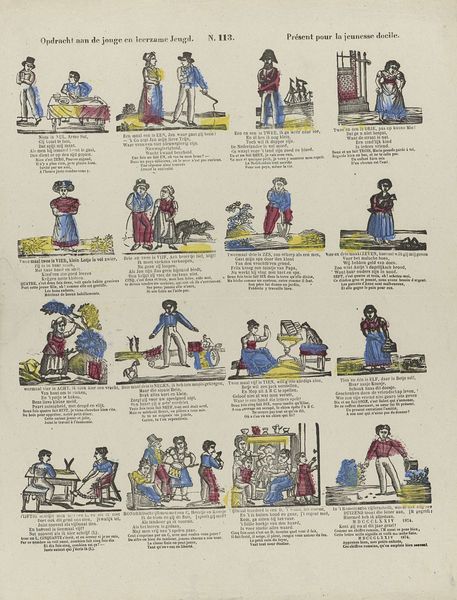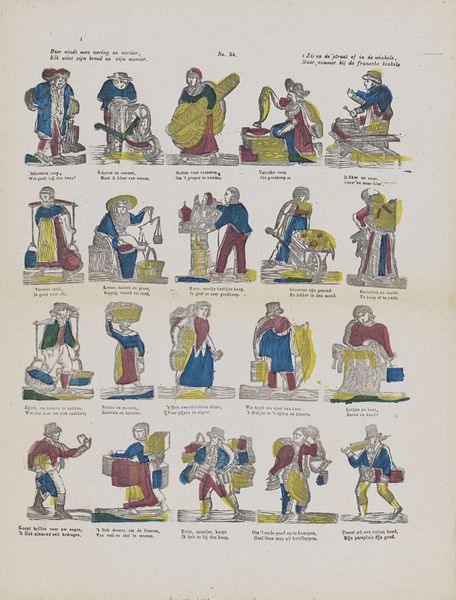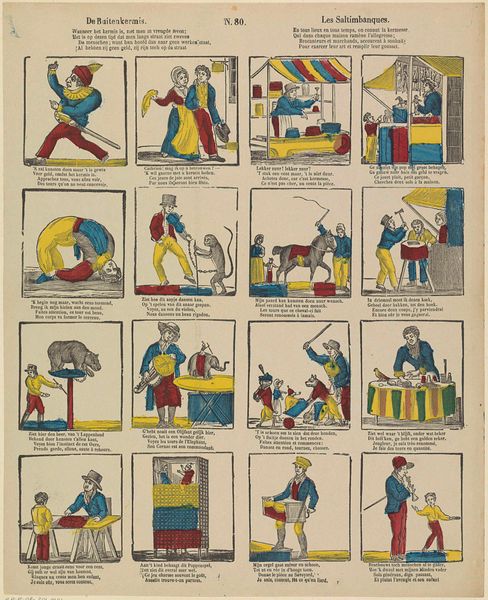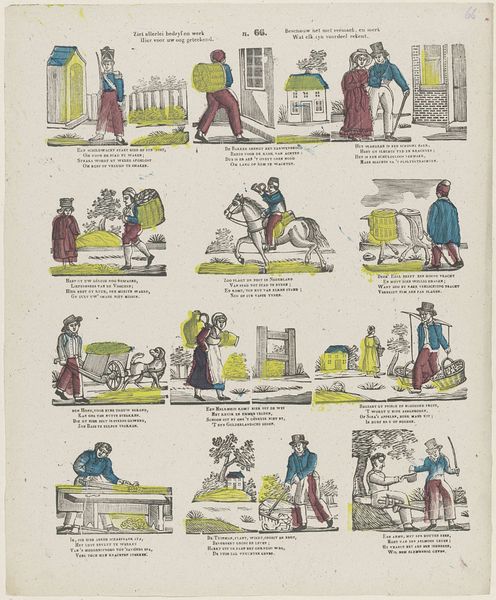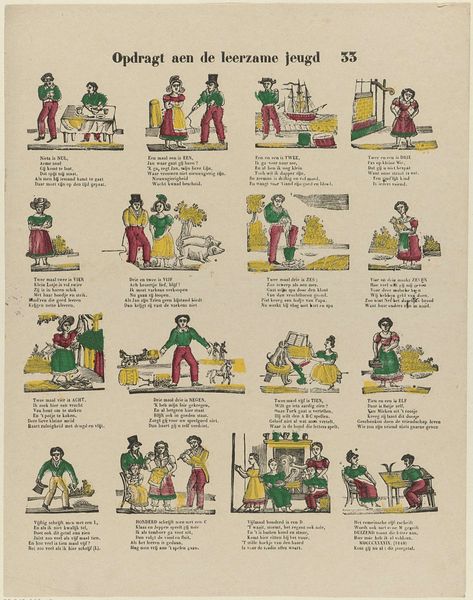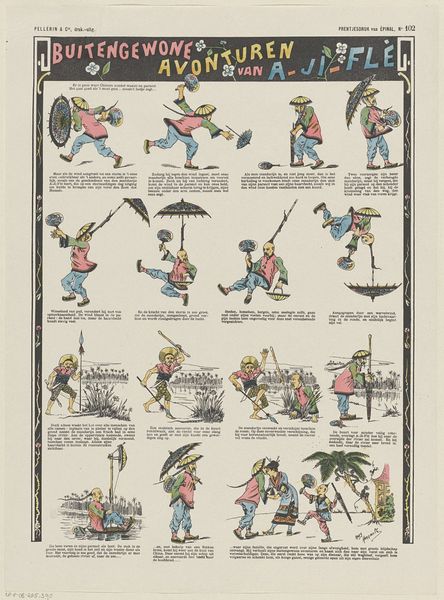
Komt kind'ren, koopt deez' prent, zij zal u wis vermaken, / Hier hebt gij weêr een keur van allerhande zaken / Het kinder speelgoed ziet gij hierbij afgebeeld, / Het wordt, voor uw vermaak hier voor u meêgedeeld 1827 - 1894
0:00
0:00
mhemeleersvanhouter
Rijksmuseum
Dimensions: height 385 mm, width 312 mm
Copyright: Rijks Museum: Open Domain
Curator: This delightful print, held at the Rijksmuseum, is titled "Komt kind'ren, koopt deez' prent, zij zal u wis vermaken…", roughly translating to "Come children, buy this print, it will surely amuse you." Created sometime between 1827 and 1894 by M. Hemeleers-van Houter, it's a vibrant mix of etching, engraving, aquatint—a veritable playground of techniques! Editor: My first impression? Whimsical, if a bit busy. The composition, with all these little vignettes crammed together, makes it feel almost like a... prototype comic strip, with its somewhat rough-hewn aesthetic. Curator: Precisely! Each little scene operates independently, but together they create a narrative of childhood play. Note the recurring color palette—yellows, blues, reds—unified through the aquatint. These hues add a level of visual coherence to what could otherwise be overwhelming. What's your read on these little figures? Editor: What interests me is that all figures depicted are children presented to a presumably child audience; each block reflects forms of innocent, idyllic childhood engagement with commerce and play—creating a space for juvenile cultural negotiation, and perhaps, reinforcing expectations of gender and class performance for young audiences of the period. It prompts us to ask, who exactly *were* the consumers, and what role did images play in shaping their identities and social behaviors? Curator: Fascinating—such nuanced socio-historical perspectives. Thinking formalistically, observe how Hemeleers-van Houter uses the line work: sometimes precise, sometimes intentionally crude to convey the energy and innocence inherent in the subject. Notice that in some cases line dictates a certain perspective but overall it functions to flatten the figures making the entire work highly decorative. Editor: But shouldn’t this flatness give us pause, if we take into consideration Romanticism and it's use of line to explore class and societal roles? And look how many scenes represent consumer behavior and gendered expectations! A kite in this hand versus a shovel or basket in the other. The work could underscore not innocence but indoctrination. Curator: Indeed. It holds an internal dialectic then. Perhaps we can consider this print less as a straightforward depiction of innocent amusement, but as a complex encoding of class, expectation and commerce within Dutch childhood of the era, a lens into how youth understood and were understood. Editor: Yes. Now that’s certainly something that resonates. To examine not what is obvious, but that which we must discover in between the lines.
Comments
No comments
Be the first to comment and join the conversation on the ultimate creative platform.
